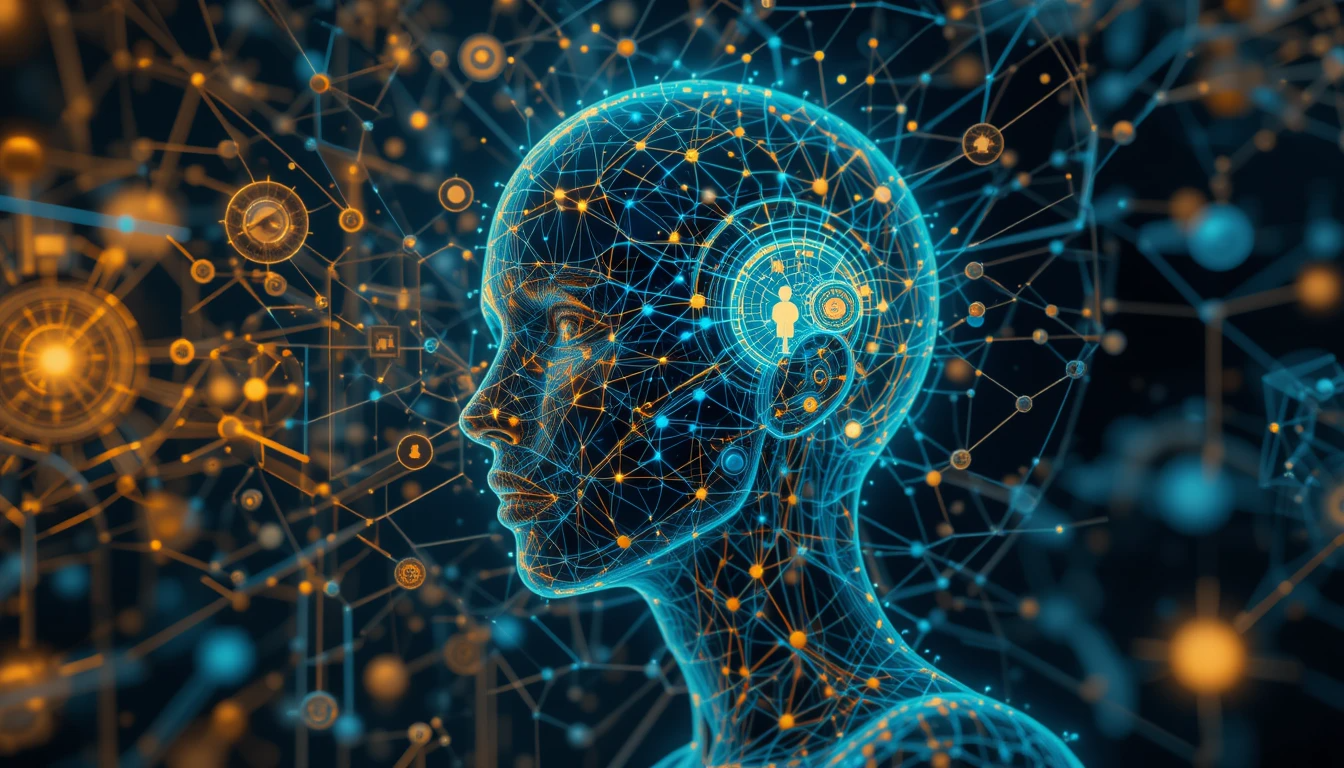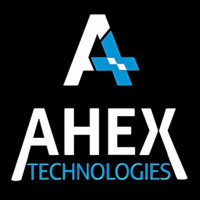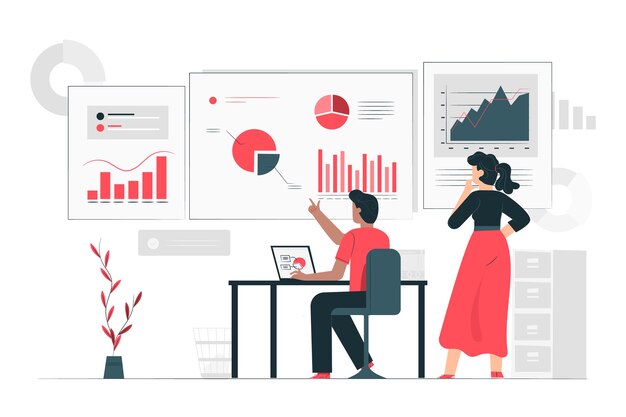The Generative AI Revolution: Transforming Industries in 2025

Strong 8k brings an ultra-HD IPTV experience to your living room and your pocket.
Generative AI is no longer a futuristic concept; it's a present-day reality reshaping industries at an unprecedented pace. Unlike traditional AI systems designed to analyze data and provide predictions or classifications, generative AI takes a leap forward by creating entirely new content. This includes text, images, audio, video, code, and even 3D models. This capability is unlocking a wave of use cases across diverse sectors, promising to redefine how we work, create, and interact with the world around us. By 2025, generative AI capabilities will have evolved exponentially, making a profound and transformative impact on creative arts, scientific endeavors, business operations, and much more.
This comprehensive guide delves into the core of the Generative AI Revolution, exploring its underlying technologies, real-world applications, ethical considerations, and the strategies you can implement to harness its power.
Understanding Generative AI: The Core Principles
What is Generative AI? A Deeper Dive
At its heart, generative AI leverages sophisticated machine learning models, often based on deep learning architectures like Generative Adversarial Networks (GANs) and transformers, to learn the underlying patterns, structures, and relationships within input data. The learning process involves exposing the AI model to vast datasets, enabling it to understand and mimic the characteristics of that data.
Once trained, these models can generate new data that shares similar characteristics with the training data. The brilliance lies in the AI's ability to produce novel outputs that were not explicitly present in the original training set, opening the door to endless possibilities.
Evolution: From Traditional AI to the Generative Frontier
The journey from traditional AI to generative AI has been a remarkable evolution, driven by advances in algorithms, computing power, and the availability of massive datasets.
Traditional AI: Early AI systems were primarily rule-based or relied on statistical analysis for tasks like classification and prediction. These systems could analyze data but lacked the capacity to create new content.
The Rise of Deep Learning: Deep learning, with its multi-layered neural networks, revolutionized AI by enabling models to learn complex patterns from raw data automatically. This paved the way for generative models.
Generative Adversarial Networks (GANs): GANs, introduced by Ian Goodfellow in 2014, marked a turning point. GANs consist of two neural networks – a generator and a discriminator – that compete against each other. The generator creates new data, while the discriminator tries to distinguish between the generated data and real data. This adversarial process leads to the creation of increasingly realistic and diverse outputs.
Transformers and Large Language Models (LLMs): The introduction of transformers, particularly models like BERT and GPT, has been instrumental in advancing natural language processing. Large Language Models (LLMs) based on the transformer architecture can generate coherent, contextually relevant text, translate languages, and even write different kinds of creative content. GPT-4, for example, represents a significant leap in LLM capabilities.
Diffusion Models: Another notable development is diffusion models, which have demonstrated exceptional performance in image generation. These models work by gradually adding noise to an image until it becomes pure noise, and then learning to reverse the process, generating new images from the noise.
Key Technologies Driving the Generative AI Revolution
Large Language Models (LLMs): LLMs, such as GPT-3, GPT-4, and LaMDA, are trained on massive amounts of text data and can generate human-quality text for various applications, including chatbots, content creation, and code generation.
Generative Adversarial Networks (GANs): GANs remain a powerful tool for generating images, videos, and other types of data. They are used in applications such as image synthesis, style transfer, and data augmentation.
Variational Autoencoders (VAEs): VAEs are probabilistic models that learn a latent representation of data. They can generate new data by sampling from the latent space and decoding it back into the original data space. VAEs are used in applications such as image generation, anomaly detection, and dimensionality reduction.
Reinforcement Learning (RL): Reinforcement learning is a type of machine learning where an agent learns to make decisions in an environment to maximize a reward. In generative AI, RL can be used to fine-tune the outputs of generative models, ensuring they meet specific criteria or objectives.
Capabilities in 2025: A Glimpse into the Future
By 2025, generative AI will offer an array of transformative capabilities:
Real-Time Content Generation: Generative AI will be able to generate content in real-time, responding to user inputs and adapting to changing contexts. This will enable interactive experiences, personalized content streams, and dynamic simulations.
Hyper-Personalization: Generative AI will enable hyper-personalized experiences across various domains. From personalized product recommendations to customized learning paths, AI will tailor experiences to individual preferences and needs.
Predictive Simulation: Generative AI will be used to create realistic simulations of complex systems, enabling businesses and organizations to test strategies, optimize processes, and mitigate risks.
Ethical Foundations: Building Responsible AI
As generative AI becomes more prevalent, ethical considerations take center stage. Ensuring responsible AI development and deployment is crucial for building trust, mitigating risks, and maximizing the benefits of this technology.
Bias Mitigation: Generative AI models can inherit biases from the data they are trained on, leading to discriminatory or unfair outputs. Bias mitigation techniques involve identifying and addressing biases in the data and the model itself.
Transparency: Understanding how generative AI models make decisions is essential for building trust and accountability. Transparency initiatives involve developing explainable AI (XAI) methods that provide insights into the inner workings of these models.
Data Privacy Frameworks: Generative AI models often require access to large amounts of data, raising concerns about data privacy. Data privacy frameworks, such as differential privacy, are used to protect sensitive information while still enabling AI models to learn from the data.
Industry-Specific Transformations: A Revolution Across Sectors
Generative AI is poised to revolutionize industries across the board, creating new opportunities and transforming existing processes. Let's explore some key industry-specific transformations:
Healthcare: Revolutionizing Medicine and Patient Care
Drug Discovery Acceleration: Generative AI is accelerating drug discovery by generating novel drug candidates, predicting their efficacy, and optimizing their properties. Case studies like AlphaFold 3, which uses AI to predict protein structures, are transforming the way drugs are developed.
AI-Driven Personalized Treatment Plans: Generative AI can analyze patient data to create personalized treatment plans tailored to individual needs and circumstances. This can lead to more effective treatments and better patient outcomes.
Ethical Debate: Patient Data vs. Privacy: The use of patient data in generative AI raises ethical concerns about data privacy and security. Balancing the benefits of AI with the need to protect patient information is a critical challenge.
To explore more about the Impact of Gen AI in Healthcare follow the blog: Generative AI in Healthcare
Finance: Enhancing Efficiency and Security
Fraud Detection with Generative Models: Generative AI can detect fraudulent transactions by identifying patterns and anomalies that traditional methods might miss. This can help financial institutions reduce losses and protect their customers.
AI-Powered Hyper-Personalized Financial Advising: Generative AI can provide personalized financial advice tailored to individual goals, risk tolerance, and financial situation. This can help individuals make better financial decisions and achieve their financial goals.
Regulatory Compliance Challenges: The use of generative AI in finance raises regulatory compliance challenges. Financial institutions must ensure that their AI systems comply with relevant regulations and guidelines.
Manufacturing: Optimizing Design and Production
Generative Design for Lightweight Materials: Generative AI can create designs for lightweight materials that meet specific performance requirements. This can help manufacturers reduce weight, improve fuel efficiency, and lower costs.
Predictive Maintenance and Supply Chain Resilience: Generative AI can predict equipment failures and optimize maintenance schedules, reducing downtime and improving efficiency. It can also enhance supply chain resilience by identifying potential disruptions and recommending mitigation strategies.
Retail: Transforming the Customer Experience
Virtual Try-Ons and AI-Curated Shopping Experiences: Generative AI can create virtual try-on experiences that allow customers to see how products look on them before making a purchase. It can also curate personalized shopping experiences based on individual preferences and browsing history.
Dynamic Pricing and Inventory Optimization: Generative AI can optimize pricing strategies by analyzing market conditions and customer demand. It can also optimize inventory levels by predicting demand and minimizing waste.
Media & Entertainment: Unleashing Creativity and Innovation
Scriptwriting Automation and Deepfake Ethics: Generative AI can automate scriptwriting tasks, freeing up writers to focus on more creative aspects of their work. However, it also raises ethical concerns about deepfakes and the potential for misuse.
AI-Generated Music and Copyright Laws: Generative AI can create original music in various styles. This raises questions about copyright laws and who owns the rights to AI-generated music.
Education: Personalizing Learning and Streamlining Administration
Adaptive Learning Platforms and AI Tutors: Generative AI can create adaptive learning platforms that personalize the learning experience for each student. It can also provide AI tutors that offer personalized support and guidance.
Automated Grading and Curriculum Design: Generative AI can automate grading tasks, freeing up teachers to focus on more individualized attention to students. It can also assist in curriculum design by suggesting relevant topics and creating engaging learning materials.
Agriculture: Enhancing Sustainability and Efficiency
Precision Farming with Generative Climate Models: Generative AI can create climate models that predict weather patterns and optimize farming practices. This can help farmers reduce water usage, minimize fertilizer application, and improve crop yields.
Crop Yield Prediction and Autonomous Harvesters: Generative AI can predict crop yields based on various factors, such as weather, soil conditions, and planting dates. It can also power autonomous harvesters that can efficiently harvest crops with minimal human intervention.
Technological Enablers: The Engines of Innovation
Several technological enablers are driving the generative AI revolution:
Hardware Innovations: Advancements in hardware, such as quantum computing and AI acceleration chips, are essential for enabling generative AI models to train and run efficiently.
Open-Source vs. Proprietary Models: The availability of both open-source models like Meta’s LLaMA and proprietary models like OpenAI’s GPT-4 is fostering innovation and competition in the field.
Multimodal AI: Multimodal AI, which combines text, images, audio, and video, is enabling new and exciting applications across various industries.
Ethical & Regulatory Challenges: Navigating the Complexities
As generative AI becomes more pervasive, addressing ethical and regulatory challenges is crucial:
Global Regulatory Trends: Regulatory trends, such as the EU AI Act and the U.S. AI Bill of Rights, are shaping the governance of AI technologies and setting standards for ethical AI development and deployment.
Bias in AI Outputs: Addressing bias in AI outputs is essential for ensuring fairness and preventing discrimination. Case studies involving hiring algorithms and racial/gender bias highlight the importance of this issue.
Environmental Impact: The environmental impact of training large AI models is a growing concern. Reducing the carbon footprint of AI is a priority.
Future Workforce & Economy: Adapting to the Changing Landscape
The rise of generative AI will have a profound impact on the future workforce and the economy:
Jobs at Risk vs. New Opportunities: Generative AI will automate some tasks, potentially displacing workers in certain roles. However, it will also create new opportunities in areas such as AI development, data science, and AI ethics.
Reskilling for AI-Augmented Workflows: Reskilling initiatives are crucial for helping workers adapt to AI-augmented workflows and acquire the skills needed to thrive in the new economy.
Economic Projections: Economic projections suggest that AI could add trillions of dollars to the global economy in the coming years.
Preparing for 2025: Strategies for Success
To prepare for the generative AI revolution, businesses and organizations should consider the following strategies:
Business Strategies: Weigh the options of building in-house AI teams versus forming third-party partnerships.
Policy Advocacy: Participate in collaborative frameworks for establishing global AI standards.
In conclusion, generative AI is revolutionizing industries by enhancing creativity, efficiency, and decision-making. In 2025, generative AI will offer real-time content generation, hyper-personalization, and predictive simulation, impacting healthcare, finance, manufacturing, retail, media, education, and agriculture. Ethical considerations, regulatory trends, and the need for reskilling are crucial as AI adoption grows. Businesses can leverage generative AI development services to build in-house AI teams or partner with third-party experts. These services encompass AI consulting, customized development, integrations, and maintenance, ensuring businesses can transform data into creative content and personalized experiences. Partnering with a generative AI development company helps businesses strategically implement AI solutions, unlock growth, and stay ahead of the competition.
Note: IndiBlogHub features both user-submitted and editorial content. We do not verify third-party contributions. Read our Disclaimer and Privacy Policyfor details.







